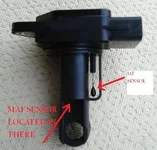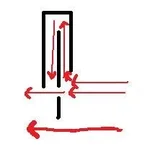has anybody actually taken out the maf sensor and looked at it?
There are two wire with a lil browinsh ball. next to that lil ball is a much bigger piece of useless plastic with a hole going through it. What the hell is the point of the maf being shapped the way it is? What the point of that piece of plastic with a hole through it. ive seen of a ton of nissan mafs and they actually looked like everything served a purpose, our mafs look universal and things are just there for the hell of it.
There are two wire with a lil browinsh ball. next to that lil ball is a much bigger piece of useless plastic with a hole going through it. What the hell is the point of the maf being shapped the way it is? What the point of that piece of plastic with a hole through it. ive seen of a ton of nissan mafs and they actually looked like everything served a purpose, our mafs look universal and things are just there for the hell of it.




